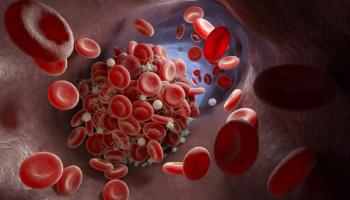
The Diabetes and Pancreatic Cancer Connection

The pancreas has many functions, and one of its most important roles is the regulation of blood sugar.
To reduce blood sugar levels, the pancreas produces insulin. To increase blood sugar, the pancreas produces glucagon. But far too often, the complex mechanisms that keep this finely tuned balancing act functioning perfectly can go awry. The result: diabetes, a chronic condition that has been called a 21st-century epidemic, affecting about 9 percent of the U.S. population.
There’s no doubt diabetes is a serious condition increasing the risk of heart disease, stroke, vascular and kidney problems, vision loss, and premature death. But diabetes can also increase the risk of pancreatic cancer. And, by itself, diabetes can be a symptom of the disease.
“When talking about diabetes, the potential pancreatic cancer connection is often left out of the conversation,” explains Dr. Suresh Chari, professor of medicine at
To be clear, diabetes is an all-too-common diagnosis worldwide. Pancreatic cancer is rare, but incidence is rising. “Not every patient with diabetes is going to develop pancreatic cancer, but doctors and patients needs to be made more aware that new-onset diabetes or sudden worsening of preexisting diabetes can be a harbinger of pancreatic cancer,” Chari says. “It’s something we’ve known for a while.”
Several New Studies Offer New Clues for Potential Earlier Detection
Indeed, the relationship between diabetes and pancreatic cancer has been known for more than a century. “But we still don’t fully understand it,” Chari says. “There are groups throughout the world looking at the relationship but there are still a lot of questions to be answered and more questions we need to ask. Nonetheless, this is an area of research that could potentially lead to earlier detection of pancreatic cancer. That’s vital if we are going to improve long-term survival.”
Blood Sugar Elevation and Tumor Size
In
In the same study, the researchers looked at a separate group of 600 patients prior to surgical removal of their pancreatic tumors. They grouped patients by tumor volume and found those with smaller tumors had lower blood sugars than those with larger tumors. That means blood glucose levels rise in relationship to the size of the tumor, says Chari, a co-author of the study. “Pancreatic cancer is a disease that desperately needs earlier detection, and there has always been a school of thought that it develops too quickly and spreads too rapidly for early detection to be feasible,” Chari says. “That isn’t necessarily the case.”
Developing an Algorithm to Determine Risk
In
“That’s why it’s important we know who these people are.”
The model, called END-PAC, which stands for Enriching New-Onset Diabetes for Pancreatic Cancer, is based on three easily accessed metabolic factors: weight change, a change in blood glucose, and age at onset of diabetes as determined by glycemia, or the presence of glucose found in a patient’s blood. The results of the retrospective study showed 80 percent sensitivity and 85 percent specificity for identifying pancreatic cancer in those with an END-PAC score of at least 3 in both the discovery and validation cohorts.
Those with an END-PAC score of at least 3 had a 4.4-fold higher prevalence rate of pancreatic cancer than those with new-onset diabetes. END-PAC scores no higher than 0 indicate a very low risk of pancreatic cancer.
Although an independent prospective study is needed to further validate the model, the algorithm is “very promising,” explains Chari. “I believe patients who have a high blood sugar, especially one that has been controlled previously, and a high END-PAC score should be tested for pancreatic cancer.”
Understanding the Diabetes Connection
Although more research needs to be done, earlier detection will happen, Chari says. He is currently working on a





